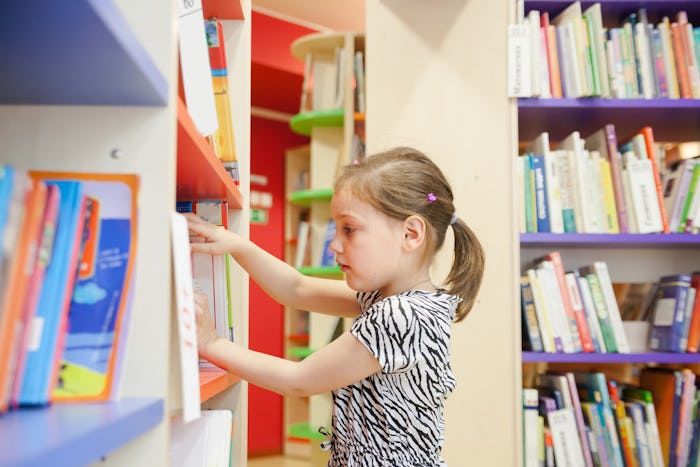Entertainment

When you think about children's books, what comes to mind? Charming, magical stories with gentle life lessons are pretty common ideas. But as the books schools used to think were totally fine for little kids to read demonstrate, kid lit can be as messed up as anything else in the world.
The reason many of these books seem inappropriate now is simply because of shifts in language and slang. Some feature styles of art that look more haunting than charming to modern eyes, while others just follow the spirit of childlike imagination to a weird, warped place. For the most part, however, these books are still harmless and enjoyable.
But other children's books from the past are more seriously problematic. Heavy-handed instances of racism, homophobia, and other forms of discrimination show up in some children's stories. Oh, even satanic ritual abuse gets a mention — who expected that to pop up in a kid's book? These books are artifacts of their time, and they speak to a moment in history (sometimes not that long ago) when these attitudes were rarely questioned. Fortunately, you now have the option of reading Dragons Love Tacos to your kid for the millionth time, or checking out any number of kid's books that are wonderful, kind, and balanced.
1
'Alfie's Home' by Richard A. Cohen
It sounds unbelievable, but some so-called children's books are aimed at shaming gay people. Both childhood sexual abuse and gay conversion therapy are topics covered in Alfie's Home by Richard A. Cohen, a children's book published in 1993. And I thought Grimms' fairy tales were messed up.
2
'Don't Make Me Go Back, Mommy' by Doris Sanford
The Satanic Panic, a belief that Satanists ran hidden child abuse rings all over America, led to hundreds of child care workers facing outlandish accusations of abuse in the 1980s, according to Snopes. These allegations were proven false, but despite that, Don't Make Me Go Back, Mommy was still published in 1990, likely freaking out any kid who happened to come across it. Because what's childhood without a little foray into imagined occultist horrors?
3
'Eat Your Poison, Dear' by James Howe
Spooky books were all the rage in the '90s, and Eat Your Poison, Dear – a mystery about poisoned middle schoolers — is probably a fine read. But a librarian at my elementary school read the book's title in a really creepy voice this one time, and I'm still kind of spooked, to be honest.
4
'The Little Match Girl' by Hans Christian Andersen
The Little Match Girl is, by all accounts, an excellent story. The book, however, is all about poverty, neglect, and the death of a little girl in the streets — heavy subjects for some unsuspecting kid.
5
'The Lonely Doll' by Dare Wright
The Lonely Doll by Dare Wright has charmed generations since its publication in 1957, but there's something a bit unsettling, perhaps even sinister, about the doll in these black and white photographs.
6
'Maggie Goes On A Diet' by Paul Kramer
Yes, eating healthy is a crucial life skill for all people, but Maggie Goes On A Diet by Paul Kramer has faced criticism for focusing on image and popularity instead of health and nutrition. The 2011 book was rereleased in 2014 as Maggie Eats Healthier, so that's worth consideration.
7
'The Muffin Muncher' by Stephen Cosgrove
Maybe this phrase didn't have a double meaning when the book was published in 1978. Whatever the case, The Muffin Muncher by Stephen Cosgrove is about a dragon who loves baked goods. It looks like the book is still in print under a new title, The Muffin Dragon, which is less likely to send parents into a laughing fit.
8
'Mummy Laid An Egg!' by Babette Cole
Sure, having "the talk" with your kid can be awkward. So 1995's whimsical Mummy Laid An Egg! by Babette Cole appears to be a funny take on the whole topic of baby-making, but just check out the book's creepy clown illustrations about sex to decide for yourself. I can never un-see the image of mummies and daddies fitting together while surrounded by balloons.
9
'The Mystery Of The Midget Clown' by Ann Bradford
This sounds like a parody, but it looks like The Mystery of the Midget Clown was indeed a real book published in 1980. What would people with dwarfism think of this particular read? (For the record, the word midget is considered a derogatory slur by the Little People of America organization.)
On an unrelated note, why is the girl on the cover illustration wearing a suit made of graph paper? Is the circus really named "Midway Circus"? I have so many questions.
10
'No-No The Little Seal' by Judith Feldman
It's crucial for children to have books that explain difficult subjects in a compassionate, understandable way. For instance, No-No The Little Seal by Judith Feldman is the story of Uncle Seal and how he abuses young No-No. Sure, this story is helpful for people who work with abused children, but the 1986 book was available for anyone to buy or check out from a library. My fiancé and his brothers read this book as kids, and their parents didn't realize it was a story about seal molestation. (They know now.)
11
'Tintin In The Congo' by Hergé
Some books have subtle allusions to racism, but this one is pretty overt. Tintin In The Congo by Hergé features rampant colonialist attitudes, in addition to some painfully racist portrayals of the Congolese. The 1930s book is not considered a part of Tintin's official canon, and its relevance is still debated today — check out the #TinTingate tag on Twitter.